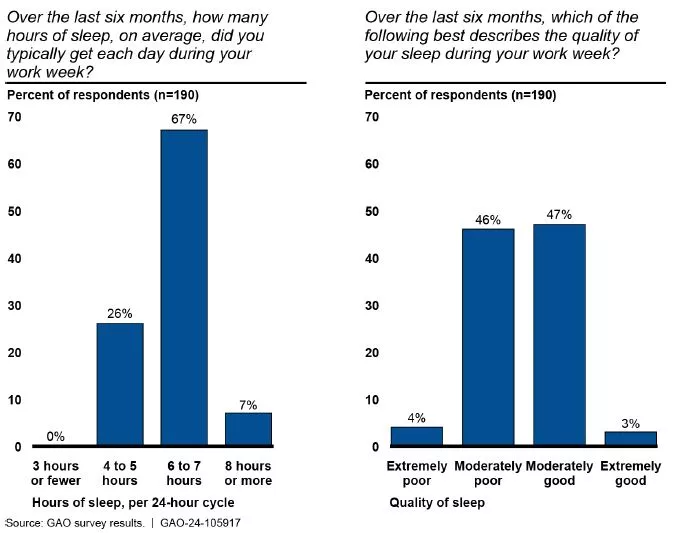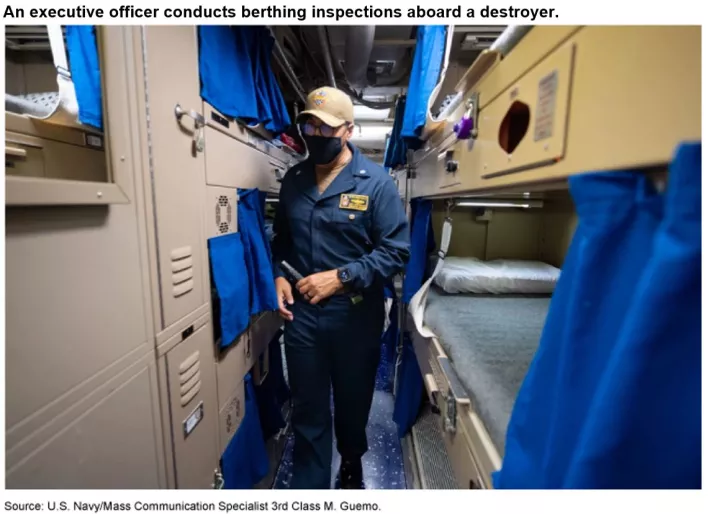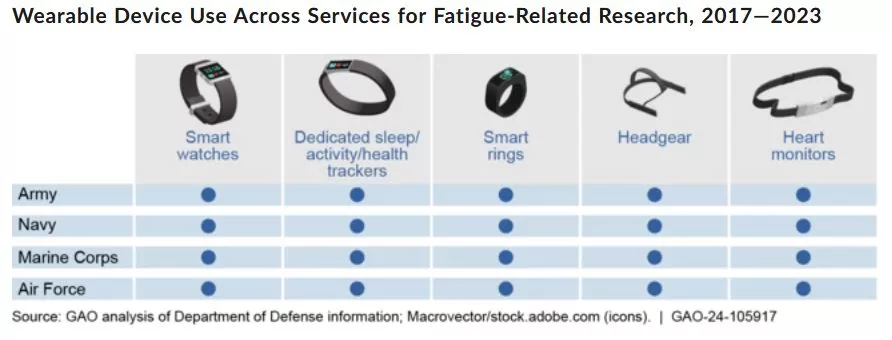Lack of Sleep Has Left Our Military Less Combat Ready and More Prone to Accidents with Dire Consequences
Lack of sleep among active duty service members has led to fatal accidents and hundreds of millions of dollars in damage to ships, vehicles, and aircraft. Many service members reported slower reflexes and responses, lower cognitive function, and concerns about near-collisions or making a deadly mistake because of fatigue.
Today’s WatchBlog post looks at our recent reports about some of the causes of widespread fatigue among military service members, particularly in the Navy, and what the Department of Defense is doing about it.
Image

Months without a good night’s sleep
For more than a decade, the Department of Defense (DOD) has found that the majority of service members sleep 6 or fewer hours a night. DOD guidance calls for 7 hours or more of sleep, which is still less than what is recommended for most of us (8 hours).
For our March report, we surveyed service members from occupations that had a high likelihood of experiencing fatigue—including pilots; plane mechanics; 24/7 alert personnel; and vehicle drivers—about the amount and quality of sleep they were getting. Most officers (93%) told us they received 7 or less hours of sleep per night over the last 6 months. And 50% said they slept poorly.
GAO Survey of Officers about Hours and Quality of Sleep
Image

Service members gave a range of reasons why they had trouble sleeping or getting enough sleep—such as long hours, the high-paced nature of operations, and medical issues like sleep apnea. Servicemembers who were deployed—many of whom share sleeping quarters—had additional reasons why sleep evaded them. For example, service members reported issues with temperature, exposure to light, and bedding. One service member told us, “The mattresses are not comfortable, and external noises from the console or your crew partner [things like: alarms, phone calls, fans to keep equipment cool] can keep/wake you up.”
Image

Fatigue in the Navy
While we’ve looked at sleep across the military, Congress also asked us to look specifically at this issue as it relates to the Navy. Fatigue was a contributing factor in the 2017 fatal ship collisions that resulted in the deaths of 17 sailors and hundreds of millions of dollars in damages to two destroyers.
For those in the Navy and serving on ships, average sleep is below healthy levels. On average, these service members get 5.25 hours of sleep each day. Getting by on less sleep than the minimum requirement can rapidly and significantly degrade alertness and performance. Navy data show that after prolonged periods without sleep, sailor performance was impaired at levels comparable to intoxication.
The Navy has taken steps to address fatigue. This includes collecting data to better understand and monitor fatigue, and evaluating the factors that contribute to it—such as staffing shortages and workload. But we think there’s more the Navy could do to address the factors that cause sailors’ fatigue and inadequate sleep. We made these recommendations and others, which can be found in our full report.
What is DOD doing about fatigue?
Fatigue has a broad impact on military readiness and performance. Without sleep, service members are poorer marksmen. They are more likely to exhibit risk-taking behaviors that can damage expensive equipment. They are also more likely to injure themselves—which means fewer soldiers, airmen, sailors, and marines available for duty.
Learn more about these effects by listening to our podcast with GAO’s Diana Maurer.
What has the military done to combat fatigue? A lot, actually. DOD has conducted research to root out the causes of fatigue and address them. DOD and the services have also implemented training and awareness campaigns to help service members recognize the signs of fatigue and prevent it. And DOD has updated its policies and guidance to highlight the importance of sleep—signaling that leadership do not view sleep as a nicety but a necessity.
Even with all this activity, we think there’s more DOD should be doing to help service members. Currently, DOD’s efforts are fragmented. We identified 130 fatigue-related research projects across the Air Force, Army, Marine Corps, and Navy between 2017 and 2023. Forty-eight of these used the same wearable devices to track sleep. Greater visibility could help DOD leverage this research, avoid duplicating it, and save money.
Image

Leadership must also monitor and assess whether its actions are helping with fatigue. We found that DOD hasn’t provided sufficient oversight and leadership for the service-level efforts about fatigue. This could make it harder for DOD to limit and manage fatigue across the department.
Learn more about our work on military fatigue and our recommendations to address it by reading our recent report.
- GAO’s fact-based, nonpartisan information helps Congress and federal agencies improve government. The WatchBlog lets us contextualize GAO’s work a little more for the public. Check out more of our posts at GAO.gov/blog.
GAO Contacts
Related Products

GAO's mission is to provide Congress with fact-based, nonpartisan information that can help improve federal government performance and ensure accountability for the benefit of the American people. GAO launched its WatchBlog in January, 2014, as part of its continuing effort to reach its audiences—Congress and the American people—where they are currently looking for information.
The blog format allows GAO to provide a little more context about its work than it can offer on its other social media platforms. Posts will tie GAO work to current events and the news; show how GAO’s work is affecting agencies or legislation; highlight reports, testimonies, and issue areas where GAO does work; and provide information about GAO itself, among other things.
Please send any feedback on GAO's WatchBlog to blog@gao.gov.




